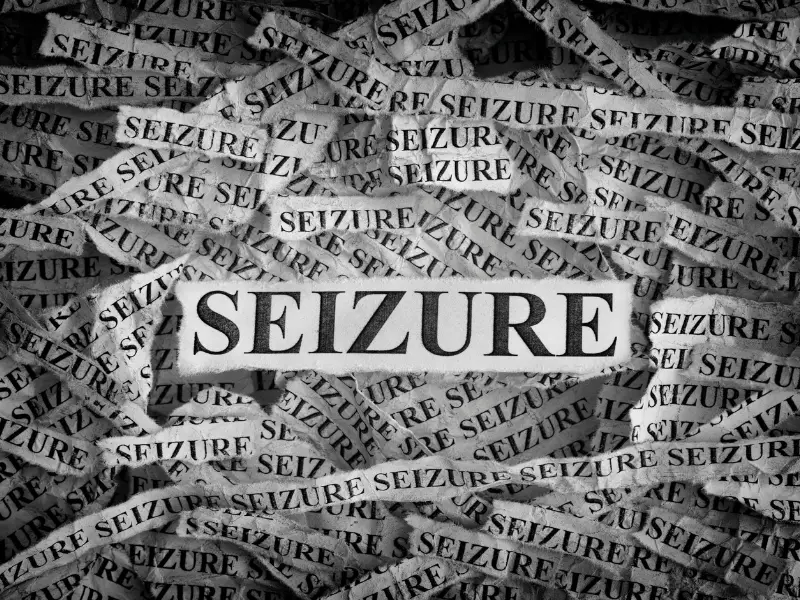Understanding the Link Between Autism and Seizures: Causes, Symptoms, and Treatments
Autism Spectrum Disorder (ASD) and seizures are two conditions that often co-occur in individuals. In fact, up to one-third of individuals with ASD experience seizures at some point in their lives. Understanding the link between these two conditions is important for effective treatment and management. This article aims to provide a comprehensive overview of the link between autism and seizures, including causes, symptoms, and treatments.
Definitions
Autism Spectrum Disorder (ASD) is a neurodevelopmental disorder characterized by social communication difficulties, repetitive behaviors, and restricted interests. Seizures, on the other hand, are a sudden surge of electrical activity in the brain that can cause changes in behavior, consciousness, and sensation. Common types of seizures include focal seizures, generalized seizures, and absence seizures.
According to the Autism Research Institute, there are several types of seizures that are common in individuals with autism. These include:
- Generalized tonic-clonic seizures: These seizures affect both halves of the brain and include both stiffening of muscles (tonic activity) and twitching or jerking (clonic activity). They may also be called generalized onset motor seizures.
- Absence seizures: These seizures involve brief periods of staring or “absence” from the environment. The person may appear to be daydreaming or unresponsive.
- Focal seizures: These seizures start in one area of the brain and can cause a variety of symptoms depending on the location of the seizure. For example, if the seizure starts in the area of the brain that controls movement, the person may experience twitching or jerking in one part of the body.
- Myoclonic seizures: These seizures involve sudden, brief muscle contractions that may cause the person to drop things or fall down.
It is worth noting that the prevalence of different types of seizures in individuals with autism may vary depending on the individual and other factors. However, studies have shown that generalized seizures and focal seizures are more common in individuals with autism than absence seizures.
The Link Between Autism and Seizures
It is worth noting that seizures are more common in individuals with ASD than in the general population. According to the Centers for Disease Control and Prevention (CDC), about 1 in 160 children have ASD, and up to one-third of those children will experience seizures. This means that seizures are about 20 times more common in individuals with ASD than in the general population. This highlights the importance of understanding the link between autism and seizures and the need for early diagnosis and treatment.
Autism increases the risk of seizures, with several factors contributing to this link. One of the main factors is genetics. Studies have shown that individuals with ASD are more likely to have genetic mutations that increase the risk of seizures. Brain abnormalities are also a contributing factor, as individuals with ASD often have structural and functional abnormalities in the brain that can lead to seizures. Inflammation is another factor that has been linked to both ASD and seizures.
ASD and seizures also share biological mechanisms. For example, abnormalities in ion channels and neurotransmitters can lead to both conditions. Ion channels are proteins that regulate the flow of ions in and out of cells, and abnormalities in these channels can lead to seizures. Neurotransmitters are chemicals that transmit signals between neurons, and abnormalities in these chemicals can lead to both seizures and ASD.
Seizures can also affect the development of ASD. Research suggests that seizures can worsen social and communication deficits in individuals with ASD, and that early treatment of seizures may improve developmental outcomes.
Contributing Factors
1. Genetic Factors
Research indicates that genetic mutations play a significant role in the increased risk of seizures among individuals with Autism Spectrum Disorder (ASD). Specific genetic alterations have been identified that are associated with both ASD and epilepsy. For instance, mutations in genes such as SCN2A, SCN1A, and CHD2 have been linked to both conditions. These genes are involved in the development and function of ion channels, which are crucial for the proper electrical activity of neurons.
Studies have shown that individuals with ASD often exhibit a higher prevalence of copy number variations (CNVs) and single nucleotide polymorphisms (SNPs) that can disrupt normal neuronal function. The presence of these genetic mutations can lead to altered excitability of neurons, making individuals more susceptible to seizure activity. Furthermore, certain syndromic forms of autism, such as Fragile X syndrome and Rett syndrome, are directly associated with epilepsy, highlighting the genetic underpinnings of this co-occurrence.
2. Brain Abnormalities
Individuals with ASD frequently exhibit structural and functional brain abnormalities that may contribute to the increased risk of seizures. Neuroimaging studies have shown that these individuals often have differences in brain volume, particularly in regions such as the frontal cortex, temporal lobes, and hippocampus. These areas are critical for cognitive function, emotional regulation, and sensory processing.
Moreover, abnormalities in the connectivity between different brain regions can disrupt normal neural circuits, leading to an increased likelihood of seizure activity. For example, altered connectivity in the default mode network and executive function networks can affect how the brain processes information and responds to stimuli, potentially triggering seizures. Additionally, the presence of migrational disorders—where neurons fail to reach their intended locations during development—can create areas of hyperexcitability in the brain, further increasing seizure risk.
3. Inflammation
Inflammation has emerged as a potential link between ASD and seizures. Research suggests that neuroinflammation, characterized by the activation of glial cells and the release of pro-inflammatory cytokines, may play a role in both conditions. Elevated levels of inflammatory markers have been observed in the cerebrospinal fluid of individuals with ASD, indicating a chronic inflammatory state.
This inflammatory response can disrupt normal neuronal function and contribute to excitability, creating an environment conducive to seizure activity. Furthermore, inflammation can impair the blood-brain barrier, leading to increased permeability and allowing potentially harmful substances to enter the brain, which can exacerbate both ASD symptoms and seizure susceptibility. Understanding the role of inflammation may open new avenues for therapeutic interventions targeting both autism and seizures.
Shared Biological Mechanisms
1. Ion Channel Abnormalities
Ion channels are proteins that facilitate the flow of ions across cell membranes, playing a crucial role in generating and propagating electrical signals in neurons. Abnormalities in ion channel function can lead to altered neuronal excitability, which is a key factor in the development of seizures. In individuals with ASD, certain genetic mutations affect ion channels, such as sodium channels (e.g., SCN2A mutations), which can disrupt the balance between excitatory and inhibitory signals in the brain.
This dysregulation can result in hyperexcitability of neurons, increasing the likelihood of seizure activity. Additionally, ion channel dysfunction may contribute to the sensory processing difficulties often observed in individuals with ASD, further complicating their overall neurological profile.
2. Neurotransmitter Dysregulation
Neurotransmitters are chemical messengers that transmit signals between neurons, and imbalances in these chemicals can significantly impact both seizures and ASD. For instance, gamma-aminobutyric acid (GABA), the primary inhibitory neurotransmitter in the brain, is often found to be dysregulated in individuals with ASD. Reduced GABAergic activity can lead to increased neuronal excitability, heightening the risk of seizures.
Conversely, elevated levels of excitatory neurotransmitters such as glutamate can also contribute to seizure susceptibility. The interplay between excitatory and inhibitory neurotransmission is crucial for maintaining a stable electrical environment in the brain. Disruptions in this balance may not only lead to seizures but also exacerbate the core symptoms of ASD, such as anxiety and social communication difficulties.
Impact of Seizures on ASD Development
Seizures can have a profound impact on the development of individuals with ASD, particularly in the areas of social interaction and communication. Research indicates that the occurrence of seizures can worsen existing deficits in these domains, leading to increased challenges in social engagement and language development.
For example, seizures can disrupt cognitive processes and memory formation, making it more difficult for individuals to learn and practice social skills. Additionally, the fear of experiencing seizures can lead to anxiety and avoidance behaviors, further isolating the individual from social opportunities.
Importance of Early Treatment for Improving Outcomes
Early diagnosis and intervention for both ASD and seizures are crucial for optimizing outcomes. Timely treatment of seizures can help mitigate their impact on the child’s developmental trajectory, potentially improving cognitive and social functioning. For instance, effective seizure management may allow for better engagement in therapeutic interventions aimed at enhancing communication and social skills.
Moreover, addressing seizures early can reduce the risk of comorbid conditions, such as anxiety and depression, which are often exacerbated by the challenges of living with both ASD and epilepsy. By prioritizing early treatment and individualized care plans, families can help support the overall development and well-being of individuals with ASD who experience seizures.
Diagnosis and Treatment of Autism and Seizures
Early diagnosis and screening for both ASD and seizures is crucial for optimal outcomes. Early intervention can improve developmental outcomes and reduce the risk of seizures. Current treatments for ASD and seizures include medications, behavioral therapies, and dietary interventions. It is important to work with a healthcare provider to develop an individualized treatment plan. Medications commonly used to treat seizures include antiepileptic drugs (AEDs) such as valproic acid, lamotrigine, and levetiracetam. Behavioural therapies such as applied behavior analysis (ABA) and cognitive behavioral therapy (CBT) can also be effective in treating ASD symptoms. Dietary interventions such as the ketogenic diet have also been shown to be effective in reducing seizures in some individuals.
Diagnosis and Treatment of Autism and Seizures
Importance of Early Diagnosis
Early diagnosis of both Autism Spectrum Disorder (ASD) and seizures is critical for several reasons:
- Improved Outcomes: Early identification allows for timely interventions that can significantly improve developmental outcomes. For children with ASD, early therapeutic support can enhance communication, social skills, and adaptive behaviors. For those experiencing seizures, prompt treatment can help prevent further neurological damage and reduce the frequency and severity of seizures.
- Tailored Treatment Plans: Early diagnosis enables healthcare providers to develop individualized treatment plans that address both ASD and seizure management. This holistic approach can lead to better coordination of care among specialists, ensuring that all aspects of the child’s health are considered.
- Reduction of Comorbid Conditions: Early intervention can decrease the risk of developing additional comorbid conditions, such as anxiety and depression, which are common in individuals with ASD and can be exacerbated by seizures. By addressing these issues early on, families can help support the child’s overall mental health and well-being.
- Family Support and Education: Early diagnosis provides families with access to resources, support networks, and educational materials that can help them understand both conditions. This knowledge empowers families to advocate for their child and seek appropriate services.
Treatment Options
Effective management of both ASD and seizures typically involves a combination of medications, behavioral therapies, and dietary interventions.
1. Medications
Medications play a crucial role in managing seizures in individuals with ASD. Antiepileptic drugs (AEDs) are commonly prescribed to help control seizure activity. Some of the most commonly used AEDs include:
- Valproic Acid (Depakote): Effective for a broad range of seizure types, including generalized tonic-clonic seizures and focal seizures. It works by increasing the availability of GABA, the inhibitory neurotransmitter in the brain.
- Levetiracetam (Keppra): Often used for focal seizures and generalized seizures. It is well-tolerated and has a favorable side effect profile, making it a common choice for children.
- Lamotrigine (Lamictal): Effective for both focal and generalized seizures, lamotrigine is often chosen for its relatively low side effects and its potential benefits for mood stabilization.
- Topiramate (Topamax): Used for a variety of seizure types, topiramate can also help with weight management and has been shown to have some benefits in addressing cognitive and behavioral issues in children with ASD.
It is essential for healthcare providers to closely monitor the effectiveness and side effects of these medications, as individual responses can vary significantly.
2. Behavioral Therapies
Behavioral therapies are integral to the treatment of ASD and can also support individuals with co-occurring seizures. Two prominent therapeutic approaches include:
- Applied Behavior Analysis (ABA): ABA is a widely recognized therapeutic approach for children with ASD. It focuses on reinforcing positive behaviors and reducing negative behaviors through structured interventions. ABA techniques can help improve communication, social skills, and daily living skills while providing a framework for managing behaviors that may be triggered by seizure activity.
- Cognitive Behavioral Therapy (CBT): CBT is effective for addressing anxiety and mood disorders, which can be particularly beneficial for individuals with ASD who experience seizures. CBT helps individuals identify and change negative thought patterns and behaviors, promoting coping strategies that can reduce anxiety related to seizures and improve overall emotional regulation.
Both ABA and CBT can be tailored to meet the unique needs of each child, making them valuable components of a comprehensive treatment plan.
3. Dietary Interventions
Dietary approaches can also play a role in managing seizures, particularly for individuals with ASD. One of the most studied dietary interventions is the ketogenic diet:
- Ketogenic Diet: This high-fat, low-carbohydrate diet has been shown to be effective in reducing seizure frequency in some individuals, particularly those with drug-resistant epilepsy. The diet works by altering the body’s metabolism to produce ketones, which serve as an alternative energy source for the brain. Some studies suggest that the ketogenic diet may also have neuroprotective effects, potentially benefiting individuals with ASD by improving cognitive function and reducing behavioral issues.
While dietary interventions can be beneficial, it is essential for families to work with healthcare providers and nutritionists to ensure that the dietary plan is appropriate and balanced, considering the child’s overall health and nutritional needs.
Early diagnosis of ASD and seizures is vital for optimizing treatment outcomes. A comprehensive treatment plan that includes medications, behavioral therapies, and dietary interventions can effectively manage both conditions, improving the quality of life for individuals and their families.
In conclusion, autism and seizures share biological mechanisms and can affect each other’s development. Early diagnosis and treatment are crucial for optimal outcomes, and current treatments include medications, behavioral therapies, and dietary interventions. More research is needed to fully understand the link between autism and seizures and develop effective treatments.



